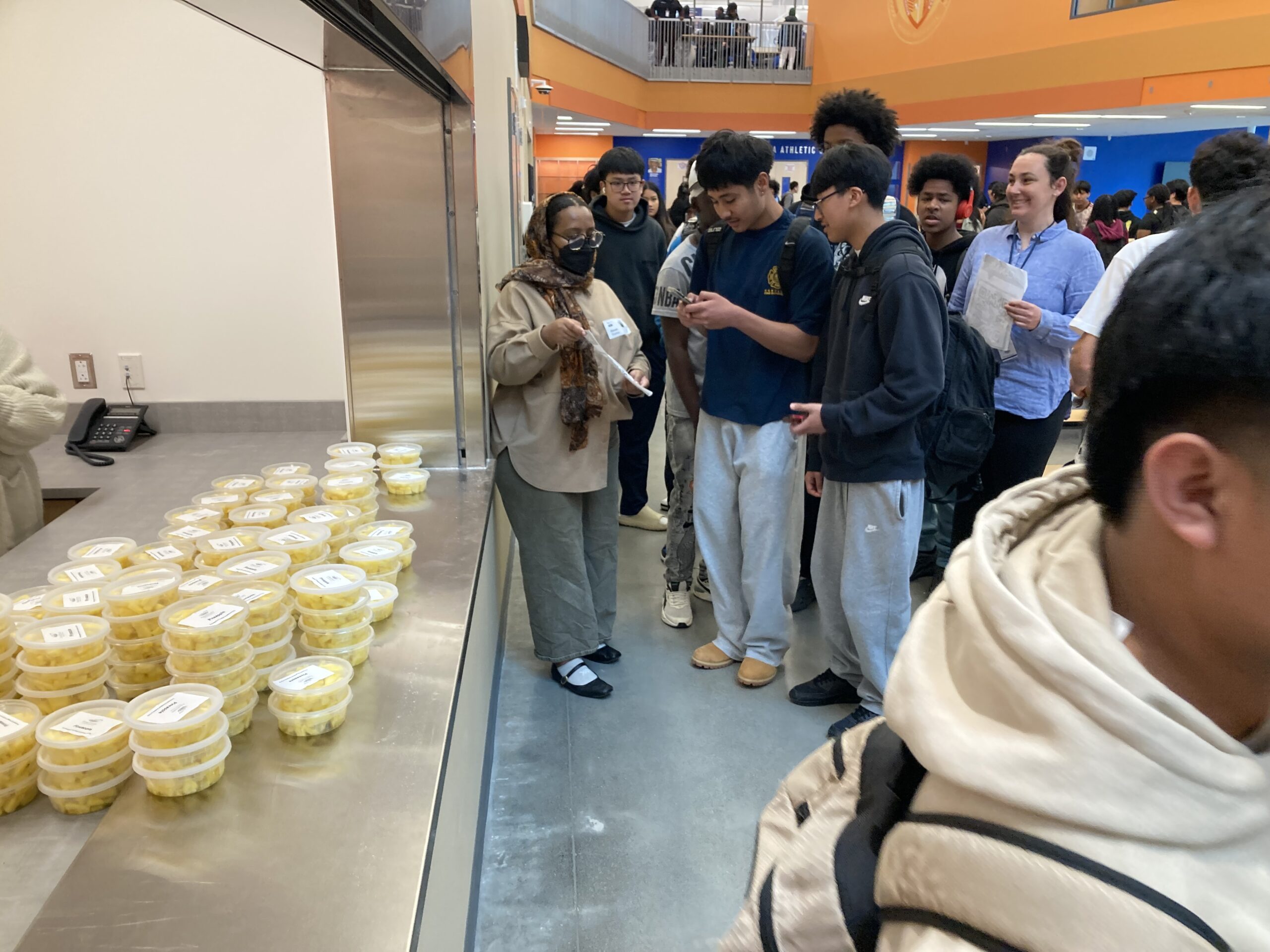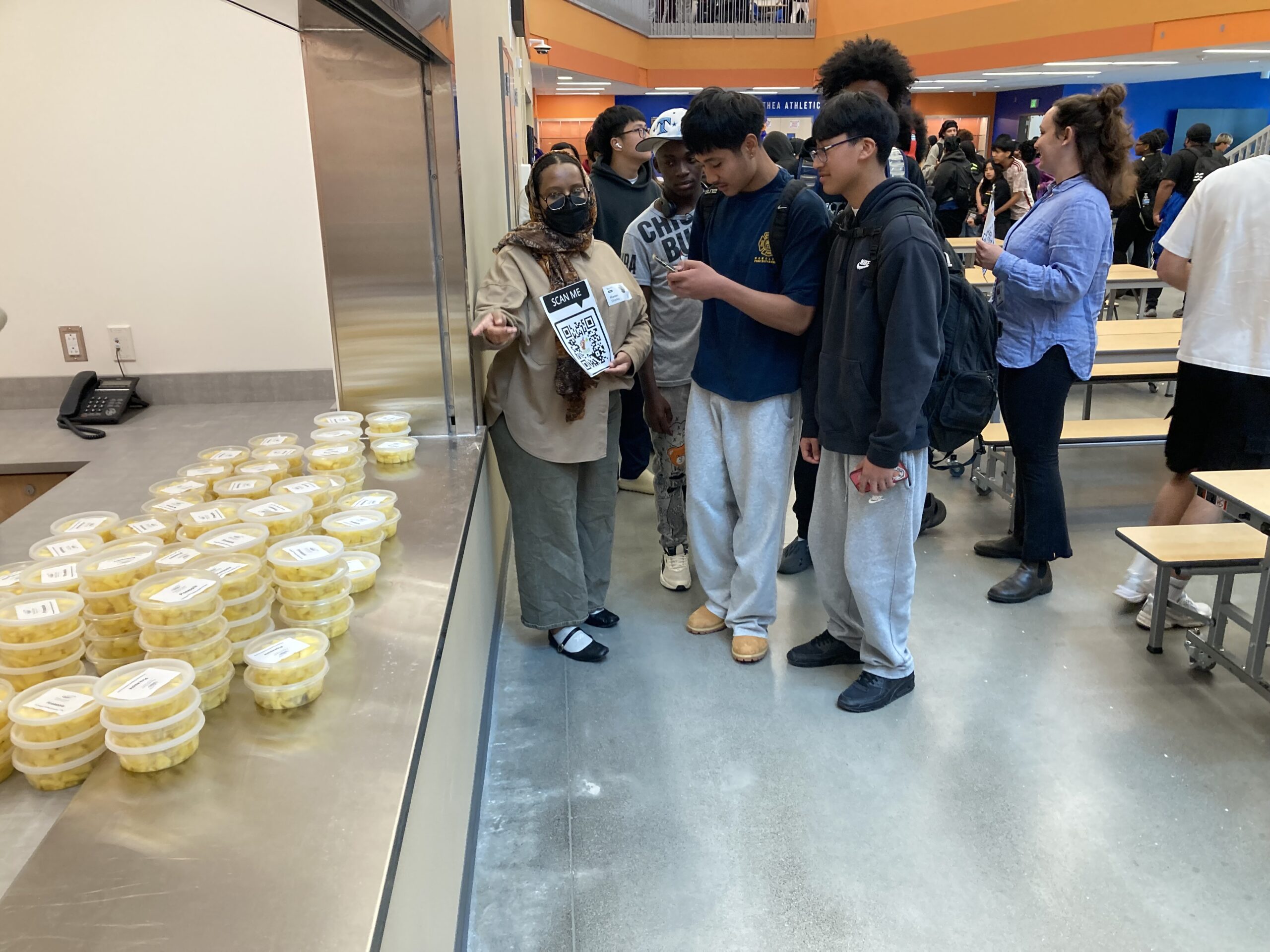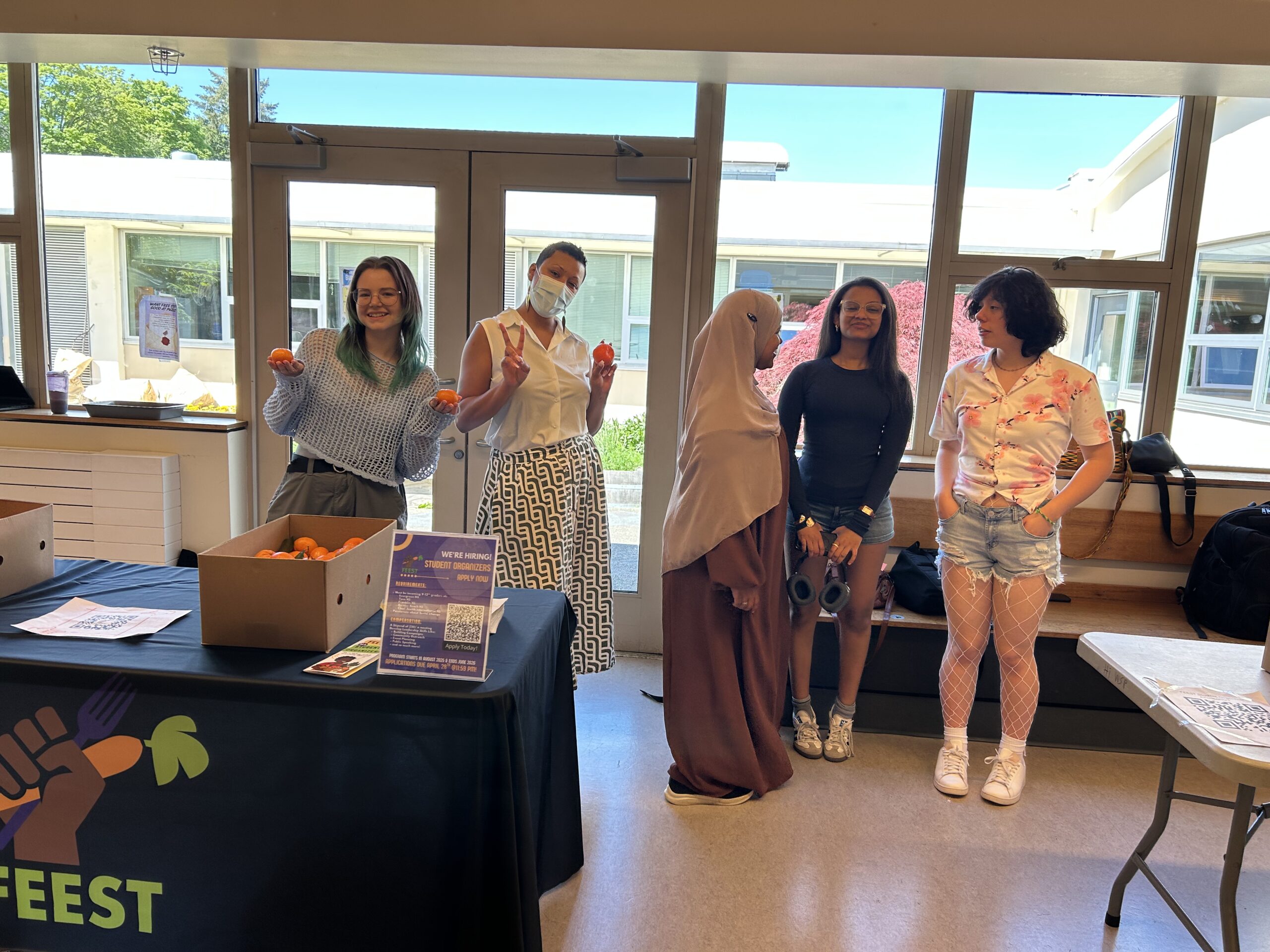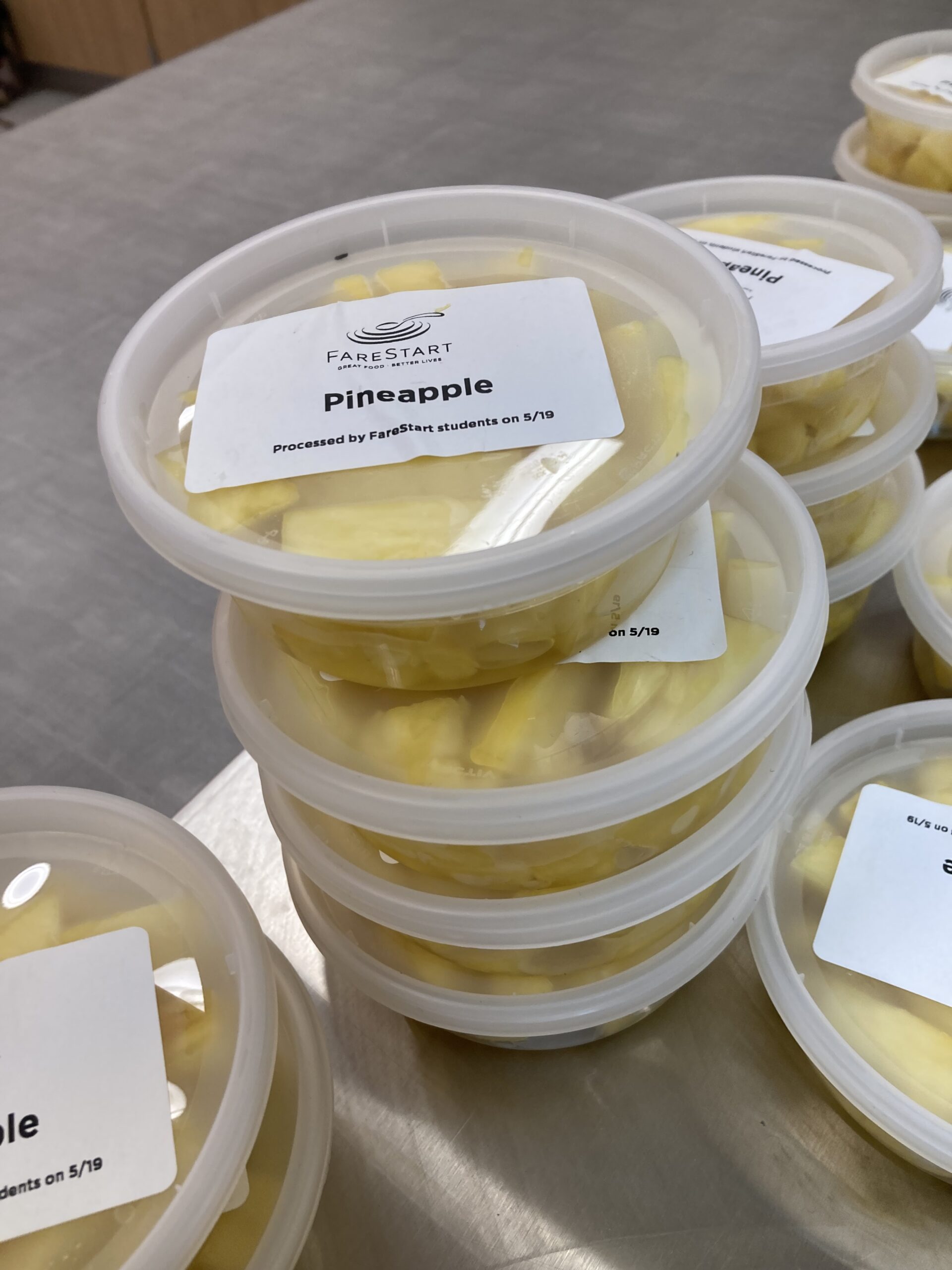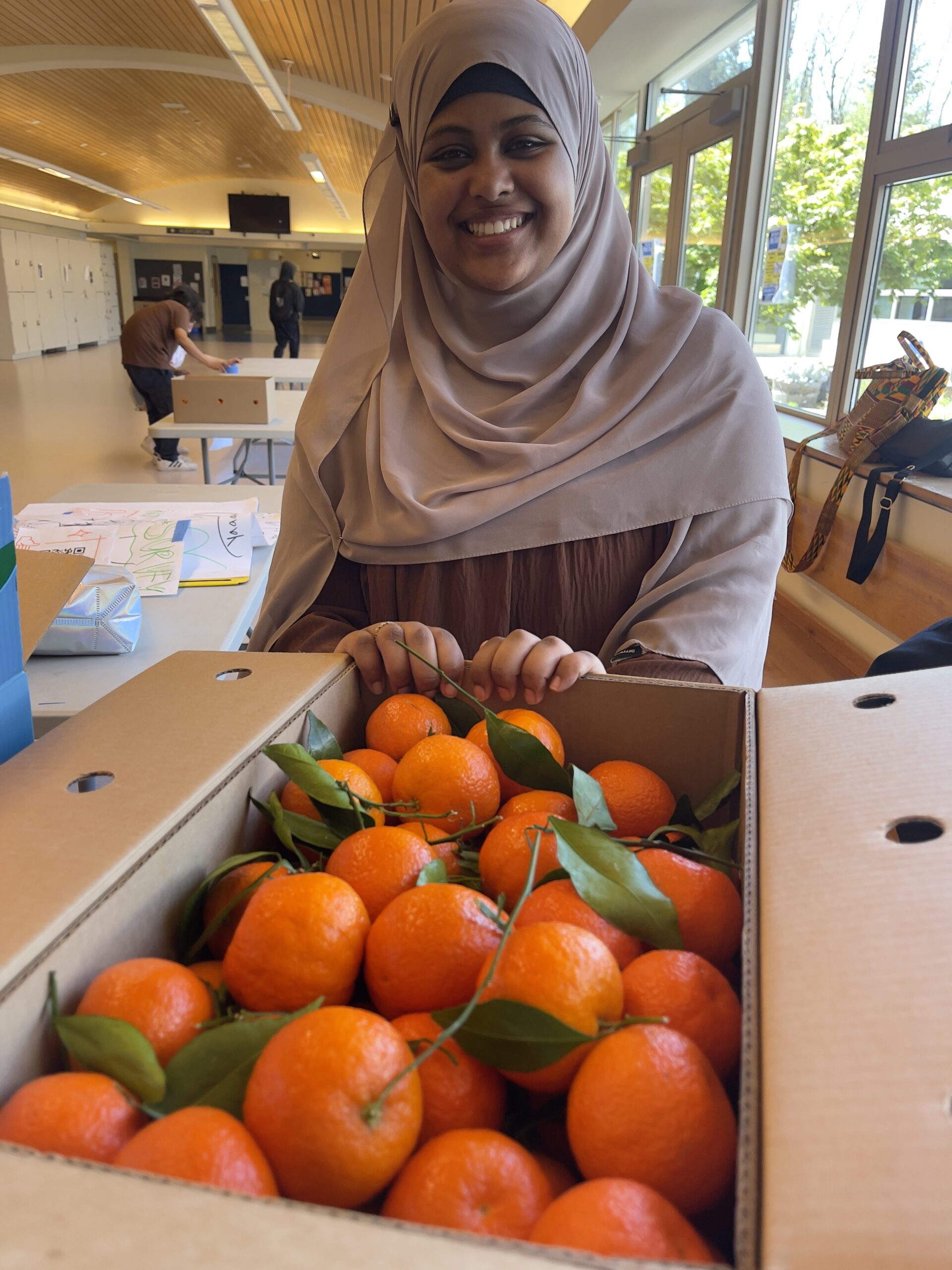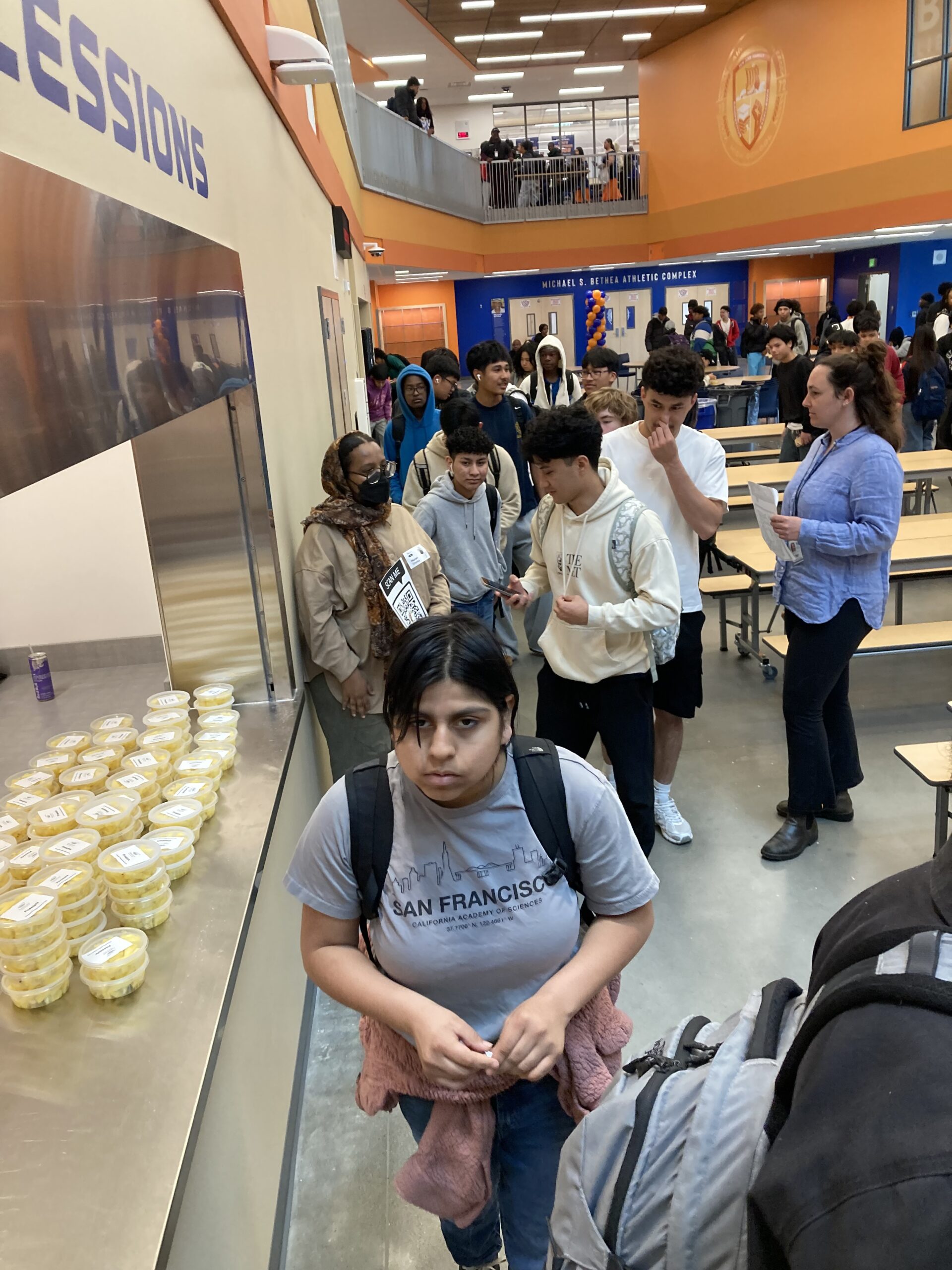Fresh, Free, and Full of Power 🍊
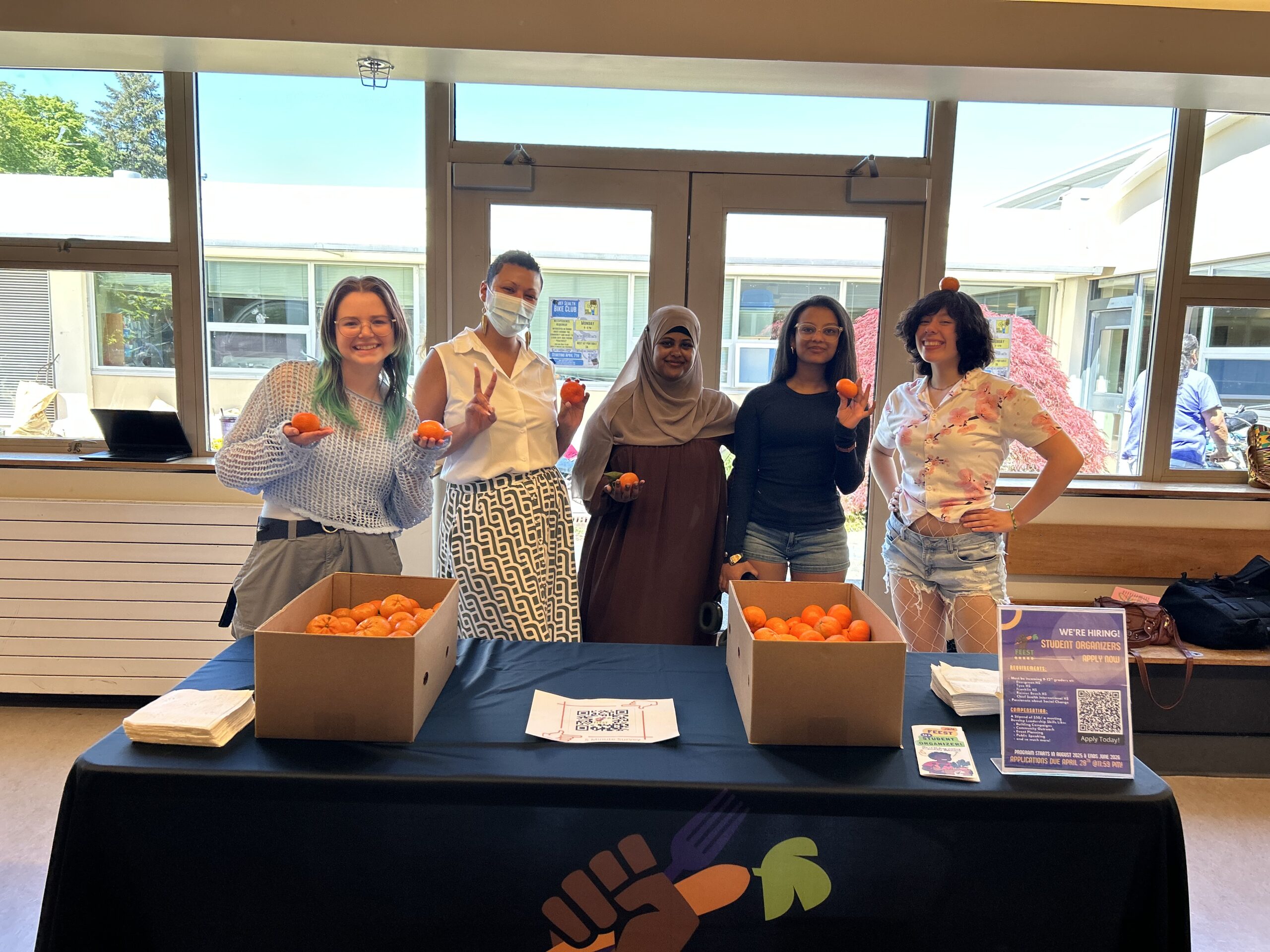
This Image is of FEEST Students + Staff, standing at their Fresh Fruit’s and Veggies produce table!
At Chief Sealth and Rainier Beach High Schools, something bold and beautiful is growing: Student Organizers are transforming snack time into a practice of care, creativity, and collective power.
This spring, FEEST launched a pilot expansion of the Fresh Fruits and Vegetables Program (FFVP) in partnership with the City of Seattle Office of Sustainability and Environment (OSE), Seattle Public Schools, and Cascadia Produce. FFVP is a program that distributes fresh fruits and veggies to students at Chief Sealth and Rainier Beach high schools in SPS. Every decision in this pilot, from what snacks to serve to where and when to serve them, was shaped by Student Organizers who care deeply about their peers and their school communities. They weren’t just distributing food; they were practicing food justice in real time.
This work is part of a larger legacy. Back in 2019, FEEST Student Organizers co-designed a snack box pilot through the Healthy Food Round Table, a collaboration that brought CSA-style fruit crates to Evergreen and Chief Sealth High Schools. That program demonstrated how fresh, free snacks could boost student focus, improve mood, and spark deeper connections across classrooms. Students led every piece of that project too: from identifying barriers to food access, to designing culturally relevant menus, to mapping out “hot spot” distribution zones across their campuses.
Supporting the FFVP expansion today are FEEST staff members Hanan and Belina, who have been collaborating with Student Organizers to plan distributions, gather feedback, and reflect on what it means to bring joy, nourishment, and choice into school spaces. From the logistics to the big-picture strategy, students are leading with care for their communities—and this pilot is just the beginning.
🍍 Why it Matters
The schools where FEEST organizes are in communities that have long been impacted by systemic racism and disinvestment. Families are navigating rising costs of living, underfunded schools, and food systems that often leave them out. And yet, here are students designing snack programs that meet real needs with joy, care, and cultural relevance.
This pilot is part of a legacy. Through FEEST’s Healthy Food Round Table (HFRT) and past snack box pilots, Student Organizers:
- 🥗 Co-designed CSA-style fruit crates that brought fresh produce into classrooms
- 🗺️ Mapped “hot spot” distribution zones across campuses to increase access
- 🍱 Created culturally relevant menus that reflected students’ diverse backgrounds
- 📊 Collected data and used it to advocate for systemic change in school food
These early projects demonstrated how fresh, free snacks improve student focus, build community, and reshape what food access can look like when students lead the way.

This image is of the cover page of FEEST’s 2020 Healthy Food Round Table Report, which features FEEST Students with produce boxes.
You can read more about the HFRT by checking out FEEST’s Publications here. ⬇️
🥭 What We Did
This year, Student Organizers at Chief Sealth and Rainier Beach picked up the torch, leading a new chapter in our food justice work. Building on insights from past pilots, they launched a mini Fresh Fruit & Vegetable Program (FFVP) designed by students, for students.
Here’s how they made it happen:
- 📝 Surveyed 113 students to understand snack preferences, timing, and distribution ideas
- 📍 Tested different locations and times—including morning nutrition breaks and late afternoon, outside of the cafeteria
- 🎨 Designed their own flyers to promote the program (shoutout to Eva and Alyanna!)
- 🍍 Partnered with Cascadia Produce to bring in fresh, juicy options like mango with Tajín and pineapple
- 📣 Gathered feedback weekly and discussed what worked, what needed adjusting, and what snacks students really enjoyed
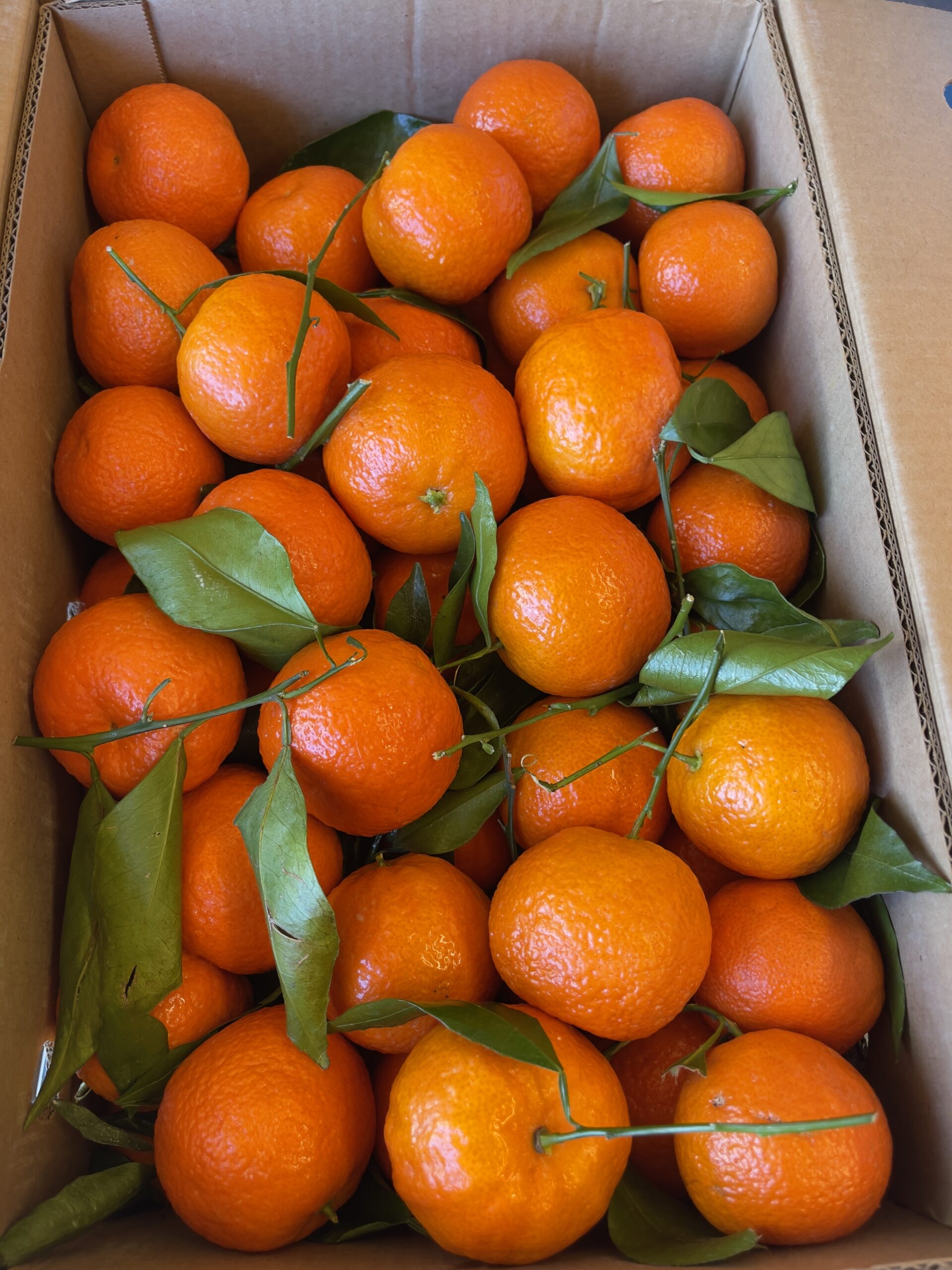
Image is of fresh oranges that were given out at Chief Sealth High School!
Student Organizers practiced systems thinking: identifying problems, testing solutions, and centering the needs of their school communities at every turn. For example, when they noticed that cafeteria-based distributions missed students who didn’t eat lunch at school, they experimented with alternative timing and locations, like nutrition breaks and hallway “hot spots” in order to reach more peers.
🌱 What’s Next
This pilot is one step in a longer journey. Our Student Organizers are continuing to analyze what they learned, connect with community partners like Cascadia Produce, and shape a vision for what food access in high schools could look like when students lead the way.
At FEEST, we believe that all young people should have access to fresh, free food. And thanks to our students, we’re one step closer to making that vision our reality.
🙏 Special Thanks
This pilot wouldn’t have been possible without the collaboration and care of so many folks in our school communities and beyond. Deep gratitude to:
- Cascadia Produce
- The Kitchen Manager at Chief Sealth
- The Kitchen Manager at Rainier Beach
- The Principal at Chief Sealth
- The Family Support Worker at Rainier Beach
- The Interim Strategic Advisor at OSE
- The Food Policy & Programs Strategic Advisor at OSE
The Farm to School Specialist at Seattle Public Schools
Your support reminds us that when we nourish students with care, we’re also feeding the future they’re creating: one rooted in justice, dignity, and joy.
Show FEEST some love!
FEEST is able to support Seattle youth as they change their communities for the better due in part to the generosity of people just like you. Join the movement by donating today, or sign up for our newsletter to get the latest and greatest news straight from FEEST headquarters!

